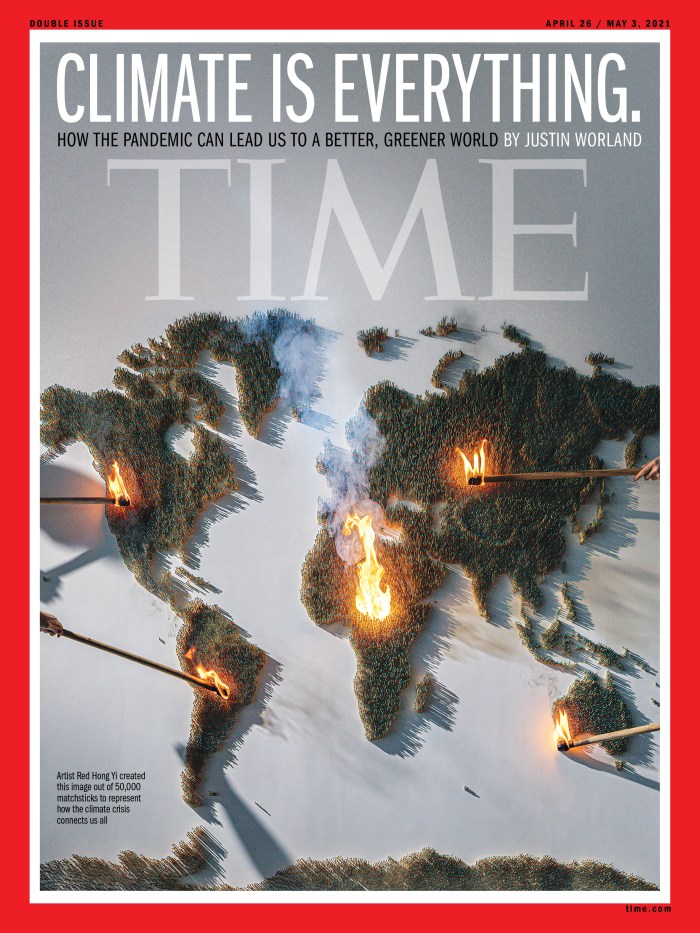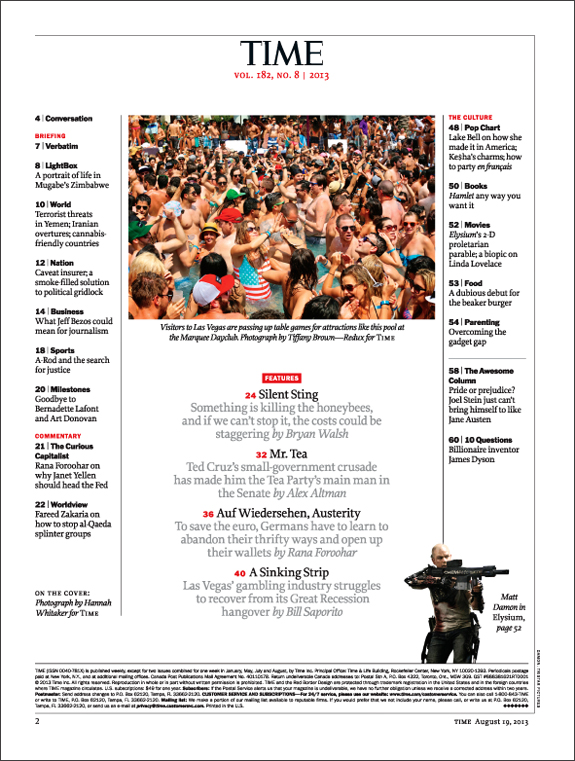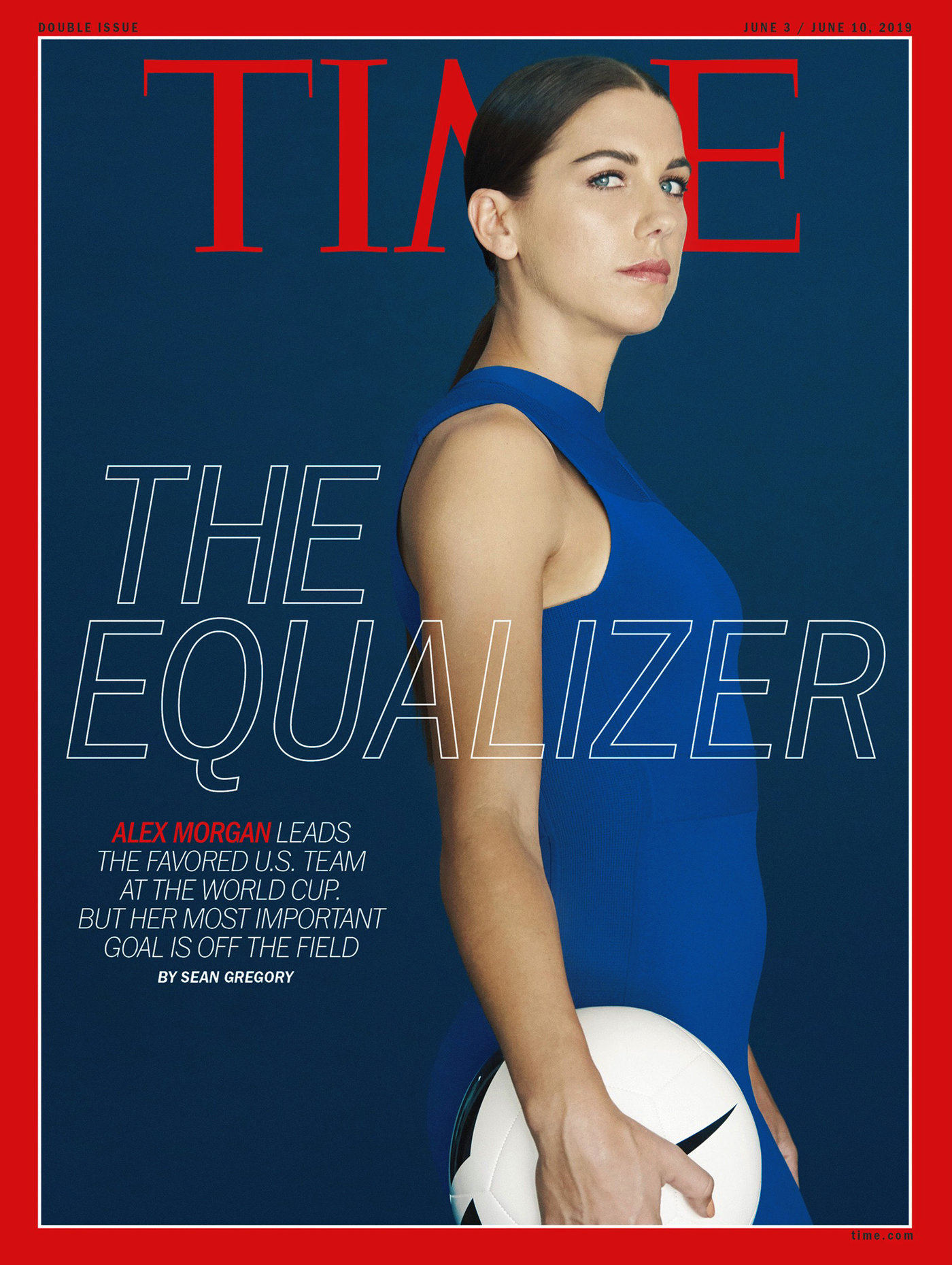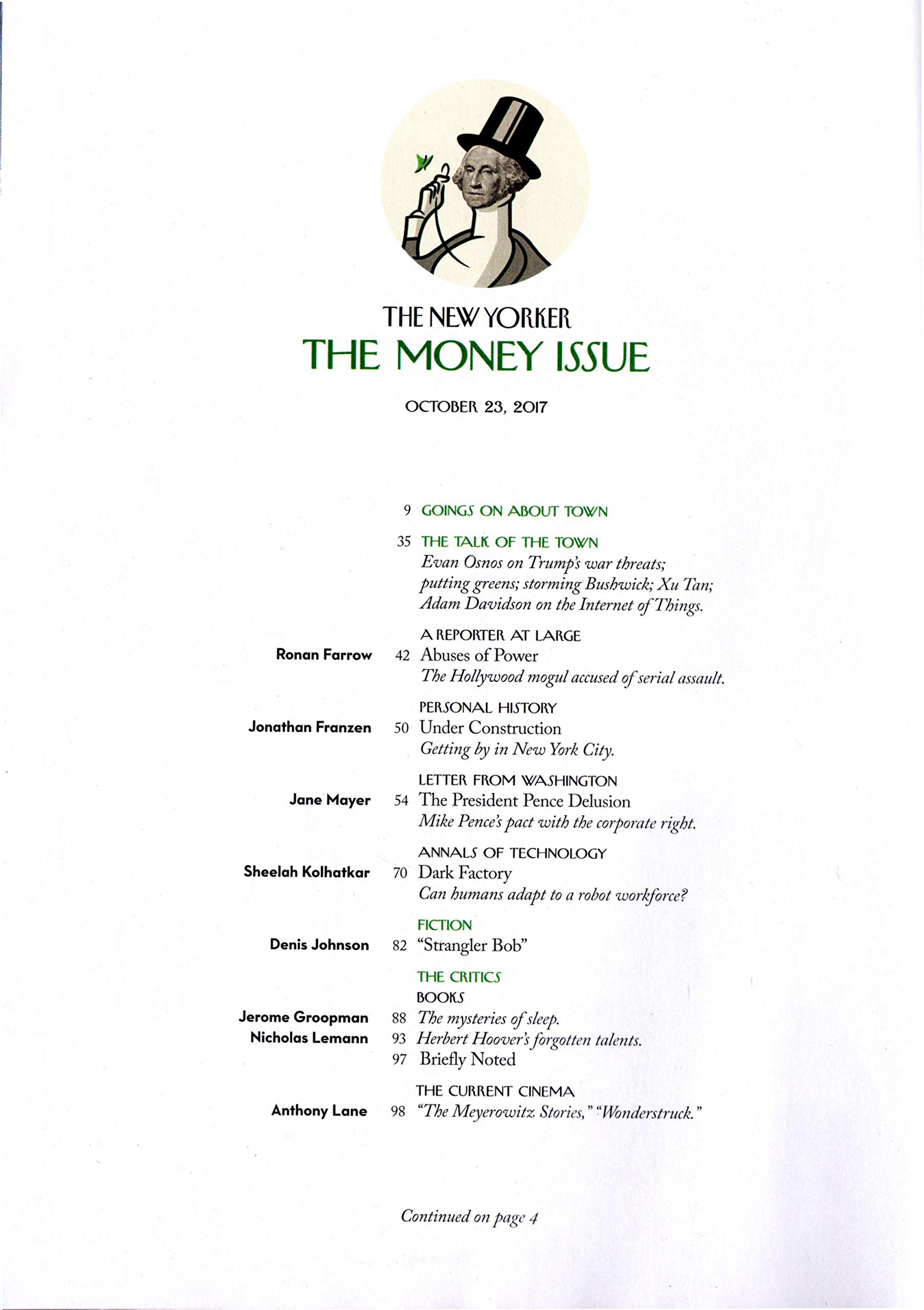Conventions of A News Magazine
A Typical News Magazine
The cover of a typical news magazine usually has a iconic masthead. To elaborate, the masthead tends not to change in color like they do in many other magazine genres. The main image does vary depending on the main cover-line of said issue of the magazine but it tends to be a person. This convention can be seen in the magazine cover to the right. There are typically one or two cover-lines displayed on the cover of the magazine if they choose to display any. This minimalistic approach is highlighted by the magazine cover on the left, which has three cover-lines. The font of the masthead is similar to Times New Roman in the fact that it portrays a professional tone. The cover of a news magazine is designed a manner to attract to their target audience, which tends to be educated adults. Having a sleek cover portrays a serious tone, something that people look for in a trusted new source.
The table of contents of a typical news magazine tends to continue with the pattern of a sleek finish. A typical table of contents lists the titles highlighted in that issue of the magazine as any table of contents does. Underneath the titles tends to be a subtitle that portrays enough information to a potential reader so that their curiosity is peaked. These titles are usually divided up into sections, based on their topic. The table of contents is usually one to two pages long. There does tend to be one main image, usually that exemplifying the feature article of that issue. Other than the main image, there are usually multiple other images that relate to the feature pieces. At the top of the table of contents, the title of the magazine is placed in a smaller font, typically along with the date. All of these attributes can be seen in the image above, in the center.
The spread of a news magazine tends to be one that is minimalistic. There are usually maybe one to two images, shining a light on some key points that are addressed in that article. Articles tend to be written in a column fashion, similar to that of a newspaper. This format can be seen in the image above. There are usually pull quotes that are written in an enlarged font. The font color scheme of the spread is not normally colorful, with magazines tending to stick to either black or white. The color of the images depends on the topic and tone the author wants to present.
Time Magazine
This iconic news magazine follows the conventions of a news magazine closely. The cover tends to display a main image which focuses on a person, like the image to the right. Depending on the topic of the issue however, this trend will be broken and the main image may be that of a certain event. This can be seen in the image to the left. The masthead, breaking conventions, does tend to change in color based on the main image present, as seen in the cover to the left. Though the masthead may change in color, the color tend to be more conservative, such as red, black, and white. There is a red border on the cover as well. This use of red and the Times New Roman font in their title proves to the audience that this magazine is one that is serious, increasing its appeal to its target audience, the educated.
The table of contents for Time Magazine does follow the conventions of a typical news magazine. The table of contents displays the titles of articles present in the issue, usually with a subtitle underneath them that helps give a brief overview of what each piece addresses. The articles are divided up into sections, following the conventions of its genre. There is usually a main image, one that exemplifies the main cover-line. The table of contents for this magazine is usually one page but can be two depending on if it is a double issue. At the top of the page, following conventions, is the logo of the magazine and the date(s) it covers. In addition to this, Time Magazine will also list the volume number next to the date and logo.
The spread of Time Magazine is extremely conventional and to an extent resembles that of a newspaper. To elaborate, all of the articles are written in a column style, as seen in the image above. This style mimics that of a newspaper and is used to help build a serious, sophisticated atmosphere. In addition to this, there are one to two pull quotes present that are enlarged in size. The color of the fonts tends to be black but other colors are occasionally used. If other colors are used, they tend to match the color scheme of the cover of the magazine. There is always a main image, one that helps shed light on one of the key ideas of the article. The number of images does vary however on a piece to piece basis.
The New Yorker
This news magazine tends to be a bit more unconventional in comparison to Time Magazine. The main image of The New Yorker is always a drawing rather than an photograph. These drawings tend to focus on a person or a group of people though they will deviate from this trend depending on the feature story. The masthead tends to remain the same font, but the color does change. The color of the masthead varies largely depending on the main image. In comparison to Time Magazine, the New Yorker is a bit more adventurous with their masthead, sometimes using vibrant colors from their cover images. The New Yorker does not have any cover-lines present on the cover of the magazine, something which is extremely unconventional for magazines in general. The reason that The New Yorker seems to be a bit unconventional would be that its target audience is metropolitan people. To attract those who live a metropolitan life, The New Yorker uses characteristics from New York City such as the use of drawn covers rather than photographs.
The table of contents for The New Yorker continues to be unconventional. There is not typically a main image present in the table of contents, as there is in many other news magazines. Similar to Time, at the top of the page will be the name of the magazine and the date that it was published. Unlike Time, along with this information it will state the main topic for the issue. For example, in the image in the center, it says "The Money Issue" in between the title of the magazine and the date that it was published. In a conventional manner, it lists all of the articles and has subtitles underneath them which clue in the reader on what is going to be addressed.
The spread of The New Yorker, similar to magazine conventions, has articles that are written in a column format, similar to that of a newspaper. A typical spread usually has one or two images, though they may not always be photographs like they are in other magazines. Sometimes, a spread will use a pull quote but not always. The font tends to always be in black with the color on the page primarily coming from the image(s) present. The spreads of this magazine do use drop cap to draw attention to the start of a paragraph or section.
Conclusion
Works Cited
Hayes, Abby. “Codes And Conventions Of A Magazine Article.” Prezi.Com, 24 Nov. 2016, prezi.com/aksozlrgdqvj/codes-and-conventions-of-a-magazine-article.
Paidcypress15. “Current Affairs Magazines/ Codes and Conventions.” Aya Najib NEA Research And Planning, 27 May 2020, a2mediastudies2020.blogspot.com/2020/05/current-affairs-magazines-codes-and.html.













Comments
Post a Comment